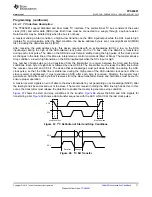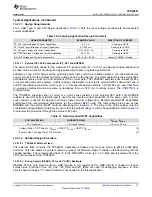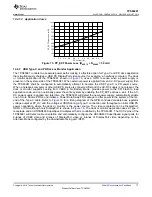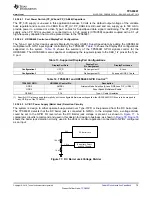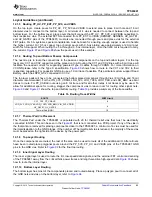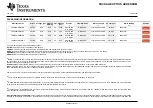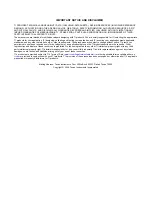
85
SLVSDC2B – FEBRUARY 2016 – REVISED AUGUST 2016
Product Folder Links:
Copyright © 2016, Texas Instruments Incorporated
Layout Guidelines (continued)
12.1.5 Routing PP_HV, PP_EXT, PP_5V0, and VBUS
On the top layer, create pours for PP_HV, PP_5V0 and VBUS to extend area to place 8 mil hole and 16 mil
diameter vias to connect to the bottom layer. A minimum of 4 vias is needed to connect between the top and
bottom layer. For the bottom layer, place pours that will connect the PP_HV, PP_5V0, and VBUS capacitors to
their respective vias. The external FETS connected from PP_EXT to VBUS (SENSEP, SENSEN, HV_GATE1,
and HV_GATE2 pins of the TPS65981) must also be connected through pours and place vias for the external
FET gates. For 5 A systems, special consideration must be taken for ensuring enough copper is used to handle
the higher current. For 0.5 oz copper top or bottom pours with 0.5-oz plating use approximately a 120-mil pour
width for 5-A support. When routing the 5 A through a 0.5 oz internal layer, more than 200 mil is required to carry
the current.
and
show the pours used in this example.
12.1.6 Routing Top and Bottom Passive Components
The next step is to route the connections to the passive components on the top and bottom layers. For the top
layer only CC1 and CC2 capacitors will be placed on top. Routing the CC1 and CC2 lines with a 8 mil trace will
facilitate the needed current for supporting powered Type C cables through VCONN. For more information on
VCONN please refer to the Type C specification.
shows how to route to the CC1 and CC2 to their
respective capacitors. For capacitor GND pin use a 10 mil trace if possible. This particular system support Dead
Battery, which has RPD_G1/2 connected to CC1/2.
The top layer pads will have to be connected the bottom placed component through Vias (8 mil hole and 16 mil
diameter recommended). For the VIN_3V3, VDDIO, LDO_3V3, LDO_1V8A, LDO1 V8D, and LDO_BMC use 6mil
traces to route. For PP_CABLE route using an 8 mil trace and for all other routes 4 mil traces may be used. To
allow for additional space for routing, stagger the component vias to leave room for routing other signal nets.
and
show the top and bottom routing.
provides a summary of the trace widths.
Table 16. Routing Trace Widths
ROUTE
WIDTH (mil)
CC1, CC2, PP_CABLE
8
LDO_3V3, LDO_1V8A, LDO_1V8D, LDO_BMC, VIN_3V3, VDDIO,
HV_GATE1, HV_GATE2
6
Thermal Pad (GND)
10
12.1.7 Thermal Pad Via Placement
The Thermal Pad under the TPS65981 is populated with 20 for thermal relief vias that must be electrically
connected to GND. This can be seen in the
that is not connected to a PCB project. If any of the vias in
the footprint are removed for placing components closer to the TPS65981, a minimum of 6 vias must be used for
thermal dissipation to the GND planes. If the number of Thermal Relief vias is reduced, the majority of these vias
must be placed on the right side of the device by the power path.
12.1.8 Top Layer Routing
Once the components are routed, the rest of the area can be used to route all of the additional I/O. After all nets
have been routed place polygonal pours around the PP_5V0, PP_HV, and VBUS pins of the TPS65981 GND
pins to the GND vias. Refer to
for the final top routing.
12.1.9 Inner Signal Layer Routing
The inner signal layer is used to route the I/O, low-speed data signals, and the external FET control and sensing
of the TPS65981 away from the critical thick power traces and length-sensitive high-speed data
shows
how to route the internal layer.
12.1.10 Bottom Layer Routing
The bottom layer has most of the components placed and routed already. Place a polygon pour to connect all of
the GND nets and vias on the bottom layer, refer to

